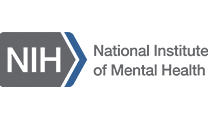[youtube]https://www.youtube.com/watch?v=P7QGV6jNsTw[/youtube]
Connect is the original version of a relationship-based HIV/STI prevention intervention demonstrated efficacious by the research team in a study between 1999 and 2005 among 217 couples, and then packaged as a best evidence intervention by the CDC. Between 2007 and 2012, the research team, in collaboration with the Center for New Media Teaching and Learning, further translated the Connect program into a web-based version, Multimedia Connect. The team conducted a clinical trial to test whether training and technical assistance on a web-based, couple-focused prevention program yields broader dissemination and adoption compared with training and technical assistance on a traditional paper-based, manualized version of the couple-focused program.
To ensure standardized and highest fidelity delivery of core intervention elements among facilitators with a range of experience, the translation includes a multimedia interface to assist in facilitator training, with all program materials in downloadable format. The final package includes:
- A Starter Kit; Technical Assistance Guide, Implementation Manual, and Training of Facilitator’s Curriculum;
- A complete DVD including 22 videos used during facilitator training or program implementation;
- A marketing video; and
- A CD-Rom with Facilitator Training Interface, which also includes all 22 video vignettes used in training or program implementation.
The Connect package is now disseminated to CDC-funded community-based organizations nationwide. See www.effectiveinterventions.org.
Funding
From 2007-2012 the National Institute of Mental Health (NIMH) funded Multimedia Connect. The mission of NIMH is to transform the understanding and treatment of mental illnesses through basic and clinical research, paving the way for prevention, recovery, and cure. For the Institute to continue fulfilling this vital public health mission, it must foster innovative thinking and ensure that a full array of novel scientific perspectives are used to further discovery in the evolving science of brain, behavior, and experience. In this way, breakthroughs in science can become breakthroughs for all people with mental illnesses.
Background
Implementation science in HIV prevention continues to lag. Despite great advances in efficacy research on behavioral risk reduction for HIV and other STIs, little is known about how to best utilize and make available evidence-based HIV prevention approaches in community settings. Improving availability and implementing current HIV prevention intervention programs on a larger scale would strengthen the effects of existing programs. Therefore further studies are needed to determine how to effectively implement evidence-based programs.
The Centers for Disease Control and Prevention (CDC) Replicating Effective Programs (REP) and Diffusion of Effective Behavioral Interventions (DEBI) initiatives make up a large portion of existing literature on the transfer of HIV prevention intervention programs to community service settings. Both projects were successful, with the CDC REP initiative succeeding in translating 15 HIV prevention programs since 1996 and the DEBI initiative providing 27 intervention programs since 1999. However, researchers still seek more cost-effective approaches to training and capacity building to improve dissemination efforts, including the infusion of digital technologies into the dissemination an implementation process.
Research
Multimedia Connect is a technology transfer study focusing on how to more effectively disseminate HIV prevention intervention. Eighty agencies from New York State were recruited for the study. Participants were eligible based on 501c(3) status, provision of HIV prevention services, service provision to heterosexual target population, and willingness to send between 1 and 6 staff members to attend training and to participate. Agencies were matched on key variables and then randomly assigned to either the web-based condition or the traditional, manual-based condition.
Up to 6 staff from each of 80 agencies (a total of 253) were invited to attend a 4 day face-to-face training and then to receive technical assistance support by phone at 2 and 4 months after training. Facilitators returned to their agencies and were observed and monitored in their attempts to implement the program. Facilitators completed assessments pre-training and then again at 6, 12 and 18 months post-training. The primary outcome, “implementation” was measured at the agency level.




